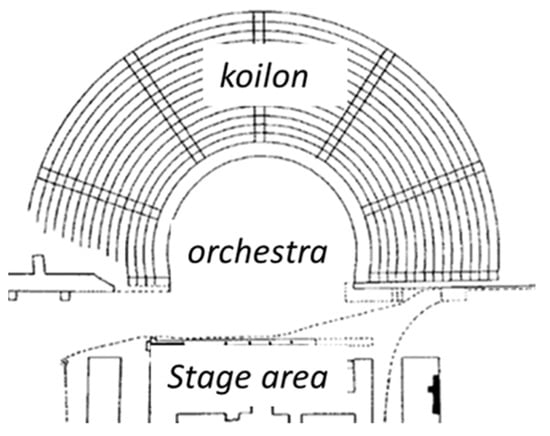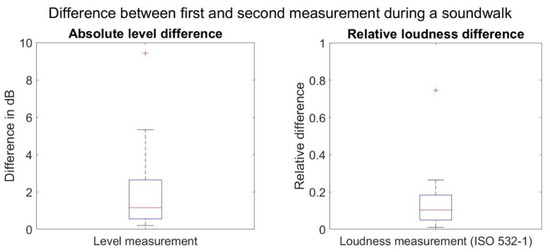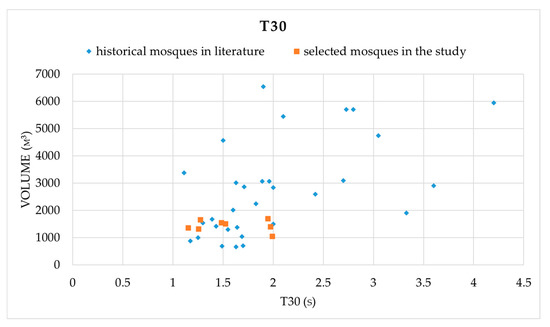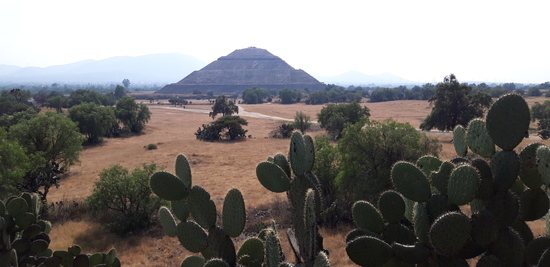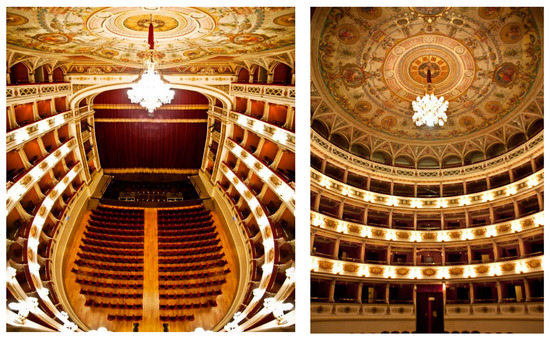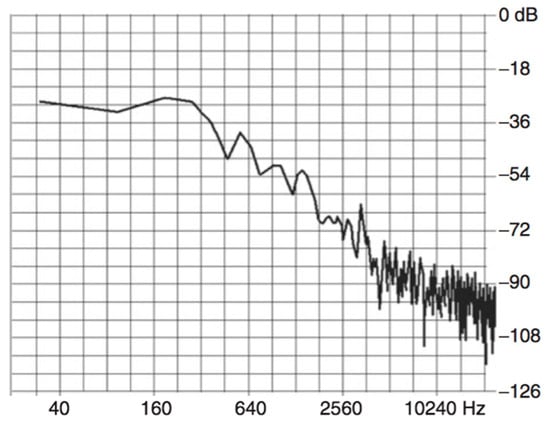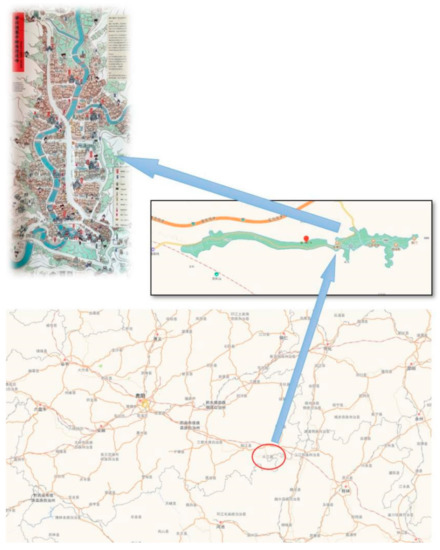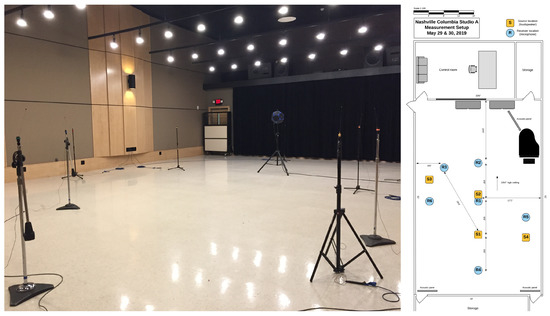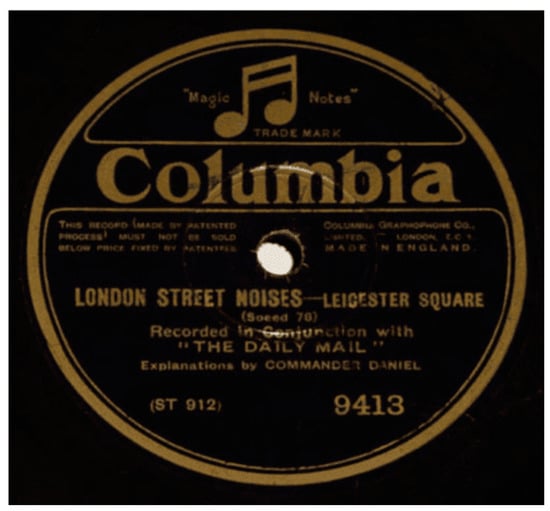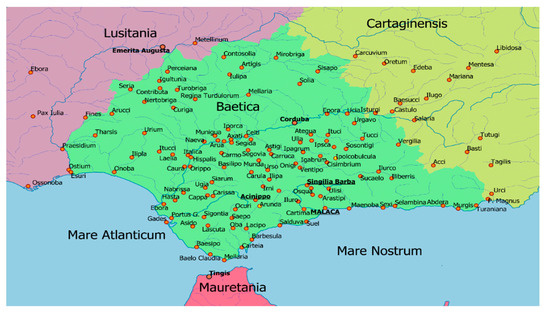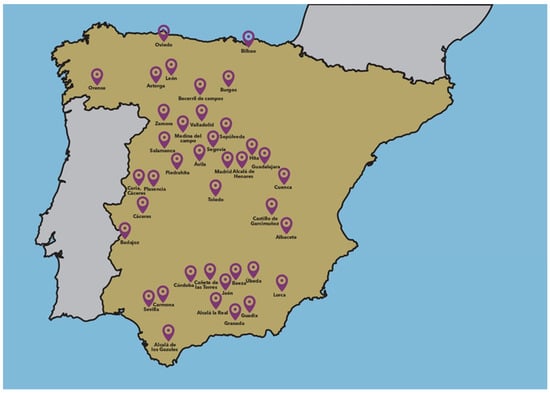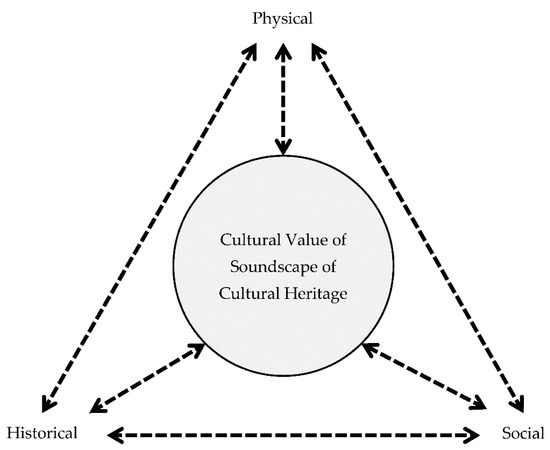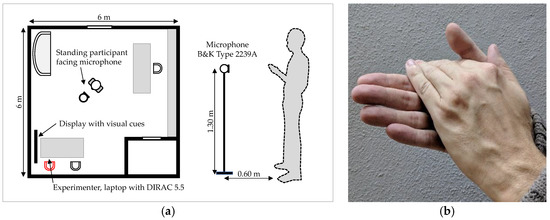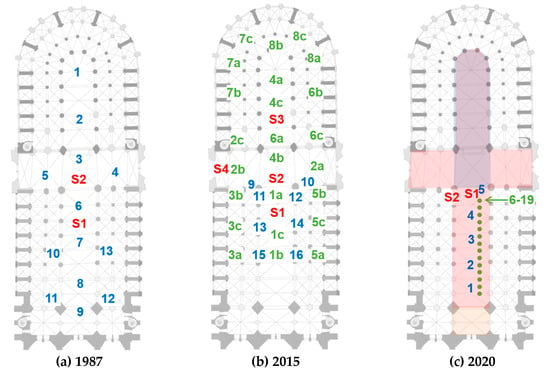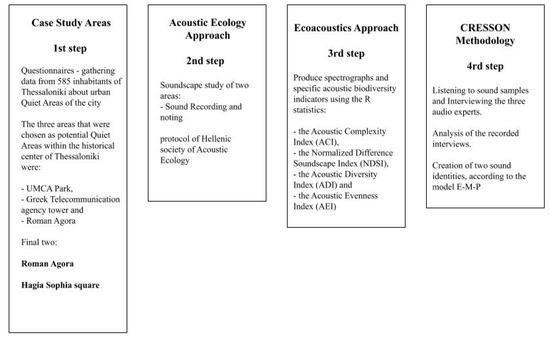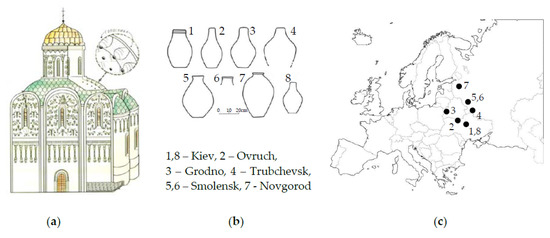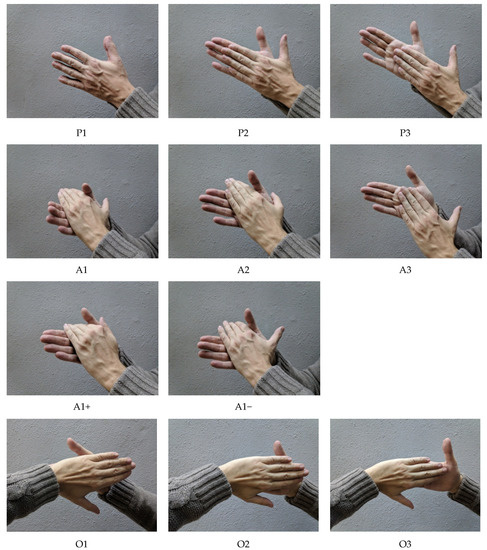Historical Acoustics
A topical collection in Acoustics (ISSN 2624-599X).
Viewed by 119127
Share This Topical Collection
Editor
 Dr. Francesco Aletta
Dr. Francesco Aletta
 Dr. Francesco Aletta
Dr. Francesco Aletta
E-Mail
Website
Collection Editor
UCL Institute for Environmental Design and Engineering, Bartlett School of Environment, Energy and Resources, University College London, London WC1H 0NN, UK
Interests: environmental acoustics; soundscape; community noise; noise annoyance; urban planning; environmental design; environmental assessment; landscape design
Special Issues, Collections and Topics in MDPI journals
Topical Collection Information
Dear Colleagues,
Further to the success of the Special Issue "Historical Acoustics: Relationships between People and Sound over Time", we are delighted to open this topic collection.
Scientific acoustical studies date back to the 6th century BC, with ancient Greek philosophers, and were developed later on by Roman architects and engineers. The establishment of “acoustics” as the science of the “production, transmission and effects of sound” in our modern understanding can be determined to have happened approximately two hundred years ago. Societies and cultures have been more or less aware of the importance of “sound” and the science underpinning it, and acoustics have always played a central role in our lives and evolution.
Recent research outcomes from archaeoacoustics, investigating the auditory and acoustic environment of prehistoric sites and monuments, have been very fruitful. The aim of this Topic Collection is to explore the origins of acoustics, by examining relationships between people and sound over time. The topics include but are not limited to:
- Acoustic characterization of prehistorical and historical spaces and buildings;
- Acoustics of worship spaces (e.g., temples, mosques, churches) and ancient theaters;
- Auralization of soundscapes of the past;
- Soundscape of heritage sites and sound as cultural heritage;
- Literature reviews on acoustic treaties.
Dr. Francesco Aletta
Guest Editor
Manuscript Submission Information
Manuscripts should be submitted online at www.mdpi.com by registering and logging in to this website. Once you are registered, click here to go to the submission form. Manuscripts can be submitted until the deadline. All submissions that pass pre-check are peer-reviewed. Accepted papers will be published continuously in the journal (as soon as accepted) and will be listed together on the collection website. Research articles, review articles as well as short communications are invited. For planned papers, a title and short abstract (about 100 words) can be sent to the Editorial Office for announcement on this website.
Submitted manuscripts should not have been published previously, nor be under consideration for publication elsewhere (except conference proceedings papers). All manuscripts are thoroughly refereed through a single-blind peer-review process. A guide for authors and other relevant information for submission of manuscripts is available on the Instructions for Authors page. Acoustics is an international peer-reviewed open access quarterly journal published by MDPI.
Please visit the Instructions for Authors page before submitting a manuscript.
The Article Processing Charge (APC) for publication in this open access journal is 1600 CHF (Swiss Francs).
Submitted papers should be well formatted and use good English. Authors may use MDPI's
English editing service prior to publication or during author revisions.
Keywords
- Historical acoustics
- Archaeoacoustics
- Ancient theatres
- Worship acoustics
- Soundscapes of the past
- Cultural heritage
Related Special Issue
Published Papers (19 papers)
Open AccessArticle
Acoustical Traditions and Cultural Identity: Exploring Kunqu’s Contribution to Collective Memory
by
Zihan Ding and Francesco Aletta
Cited by 1 | Viewed by 1465
Abstract
Kunqu Opera, hailed as the “ancestor of all Chinese operas”, plays a crucial role in preserving cultural identity and collective memory in the Jiangnan region. This research examines the acoustical traditions of Kunqu. Through expert interviews and thematic analysis, the study explores key
[...] Read more.
Kunqu Opera, hailed as the “ancestor of all Chinese operas”, plays a crucial role in preserving cultural identity and collective memory in the Jiangnan region. This research examines the acoustical traditions of Kunqu. Through expert interviews and thematic analysis, the study explores key acoustic elements, including vocal techniques and musical structures, and their symbolic and emotional impact. Five central themes emerged, including Kunqu’s role in collective memory, its function as a cultural symbol, the evolution of its transmission, the emotional resonance of its acoustic elements, and the modern challenges and opportunities for preservation. The findings highlight the importance of maintaining Kunqu’s cultural identity within acoustical heritage, while also recognizing the need for innovation in its transmission. This research contributes to the broader discussion on intangible cultural heritage and provides insights into how traditional art forms like Kunqu can be preserved amidst modernization.
Full article
►▼
Show Figures
Open AccessArticle
The Historical Building and Room Acoustics of the Stockholm Public Library (1925–28, 1931–32)
by
Patrick H. Fleming
Viewed by 1878
Abstract
The Stockholm Public Library was realized in two distinct phases of construction in the 1920s and early 1930s, and remains a well-known work in twentieth-century architecture, with a heritage status today. While previous studies have focused on the library’s architectural design, particularly its
[...] Read more.
The Stockholm Public Library was realized in two distinct phases of construction in the 1920s and early 1930s, and remains a well-known work in twentieth-century architecture, with a heritage status today. While previous studies have focused on the library’s architectural design, particularly its lighting, acoustics were also an important aspect of the building’s design and construction. This study marks the first detailed investigation of the library’s architectural acoustics, with a suite of standard measurements performed to assess and characterize the library’s historical room and building acoustics. Reverberation time measurements in the library’s reading rooms yielded results of about 1.5–2 s for frequencies associated with speech. A significantly longer reverberation time of 5–6 s was measured in the library’s central rotunda, confirming a prominent acoustic issue in the library, where appropriate heritage discussions are needed in the future as the library undergoes a major renovation in the coming years. A comparison of the measured airborne and impact sound insulation of the 1920s and 1930s reading room ceilings also yielded interesting results. While the materials in library’s two construction periods are notably different, the airborne sound insulation performance of the 1920s and 1930s floors or ceilings was comparable and in line with contemporary standards. Impact sound insulation results from the 1920s and 1930s floors, however, differed significantly, with the latter displaying a relatively poor performance. Flanking transmission effects related to historical construction details and deviations from archival plans were investigated and discussed. This work emphasizes the practical and academic importance of conducting on-site measurements, and the close mutual development of modern architecture, construction, and architectural acoustics.
Full article
►▼
Show Figures
Open AccessArticle
The Acoustic Characteristics of Hellenistic Morgantina Theatre in Modern Use
by
Giovanni Amadasi, Antonella Bevilacqua, Gino Iannace and Amelia Trematerra
Cited by 3 | Viewed by 2939
Abstract
Thousands of theatres were built during the Hellenistic period in Greece and overseas colonies. The main elements of the Hellenistic theatre are the following: the orchestra, where music and songs were performed to accompany the acting performance, and the
koilon, where the audience
[...] Read more.
Thousands of theatres were built during the Hellenistic period in Greece and overseas colonies. The main elements of the Hellenistic theatre are the following: the orchestra, where music and songs were performed to accompany the acting performance, and the
koilon, where the audience sat. Hellenistic theatres were built without any ceiling, with an open-air configuration. This paper reports the acoustic characteristics of the Greek (Hellenistic) theatre located in Morgantina (Sicily, Italy) based on the technical data gathered in different listening positions selected across the sitting area (
koilon). The theatre of Morgantina was built in the third century BC and renovated a few decades ago. Nowadays, it is the center of important social and cultural activities. The outcomes of the beamforming technique employed for the survey have been discussed in comparison with traditional acoustic parameters, such as ISO 3382. The scope of this article is to assess the usability of this theatre intended to be used for different types of artistic performances.
Full article
►▼
Show Figures
Open AccessArticle
COVID-19 Impacts on Historic Soundscape Perception and Site Usage
by
Pamela Jordan and André Fiebig
Cited by 7 | Viewed by 4537
Abstract
The ISO 12913 standards acknowledge the primacy of context in perceiving acoustic environments. In soundscape assessments, context is constituted by both physical surroundings and psychological, social, and cultural factors. Previous studies have revealed similarities in people’s soundscape assessments in comparable physical surroundings, such
[...] Read more.
The ISO 12913 standards acknowledge the primacy of context in perceiving acoustic environments. In soundscape assessments, context is constituted by both physical surroundings and psychological, social, and cultural factors. Previous studies have revealed similarities in people’s soundscape assessments in comparable physical surroundings, such as urban or national parks, despite differing individual associative contexts. However, these assessments were found to be capable of shifting in the historic setting of the Berlin Wall Memorial. Providing contextual information from the past appears to have some bearing on soundscape perception. The COVID-19 lockdown measures enacted since March 2020 in Germany have prevented most tourist activity at the memorial, and a resulting shift in user activity has been observed in the otherwise open and accessible memorial landscape. Building on previous soundscape investigations conducted at the memorial, this paper investigates what effect the restrictions have had on the soundscape context and its perception by visitors. Informal interviews paired with comparative measurements indicated context pliability for local stakeholders. In contrast to site programming alone, tourist presence also appears to affect context perception for local users. This holds repercussions for soundscape and heritage site designs serving local and tourist populations—and their divergent perceptions—alike. The impacts of soundscape assessments being neither static nor generalizable across stakeholders are discussed with suggestions for further research.
Full article
►▼
Show Figures
Open AccessArticle
An Investigation on the Effects of Architectural Features on Acoustical Environment of Historical Mosques
by
Fatma Yelkenci Sert and Özgül Yılmaz Karaman
Cited by 11 | Viewed by 5988
Abstract
In the historical period, different mosques were built in the Anatolian side; the differences in size, typology and style were affected by the climate conditions, cultural and social aspects, availability of materials and the construction techniques of the region they were built in.
[...] Read more.
In the historical period, different mosques were built in the Anatolian side; the differences in size, typology and style were affected by the climate conditions, cultural and social aspects, availability of materials and the construction techniques of the region they were built in. The ceiling structure, which is the most influencing factor for mosque acoustics, is designed with either curvilinear elements or a flat ceiling for mosques. In the context of our case study, the eight historical mosques in Turkey, with different materials and types of ceiling structures, are investigated in terms of acoustical characteristics in the main prayer hall. Acoustical data are collected by measurements to reveal how the formal differences and material change in ceiling structures affect the acoustic environments of mosques with similar volume. Distribution of acoustical parameters and the suitability of the values obtained through measurements are compared to reflect the effect of architectural features on the acoustical characteristics of the prayer hall.
Full article
►▼
Show Figures
Open AccessArticle
Sonic Artefacts of Teotihuacan, Mexico (Horns, Trumpets and Pipes)
by
Arnd Adje Both
Cited by 5 | Viewed by 8416
Abstract
This paper presents the acoustic study of a sample of sonic artefacts, in particular a selection of wind instruments (horns, trumpets and pipes), from the UNESCO World Heritage Centre of Teotihuacan, Mexico, based on a thorough examination of the accessible and playable archaeological
[...] Read more.
This paper presents the acoustic study of a sample of sonic artefacts, in particular a selection of wind instruments (horns, trumpets and pipes), from the UNESCO World Heritage Centre of Teotihuacan, Mexico, based on a thorough examination of the accessible and playable archaeological finds and the construction and subsequent test of a series of experimental models. Combined with the archaeological and iconographical information, the study helps to deduce information with regard to the urban settings in which these instruments might have been used. It also reveals some basic acoustic components of the music once performed in Teotihuacan.
Full article
►▼
Show Figures
Open AccessArticle
Evaluation of Acoustic Features after Refurbishment Works Inside Two Historical Opera Theatres Located in Italy
by
Antonella Bevilacqua and Lamberto Tronchin
Cited by 6 | Viewed by 5497
Abstract
The acoustical characteristics of a room where the artistic performance is presented to the audience have a critical impact on the experience of both artists and spectators. It is important to know how the original aspects and the refurbishment works throughout the centuries
[...] Read more.
The acoustical characteristics of a room where the artistic performance is presented to the audience have a critical impact on the experience of both artists and spectators. It is important to know how the original aspects and the refurbishment works throughout the centuries are brought to the characterization of the sound field in such theatres, with positive and negative consequences. This paper presents the acoustical assessment of the Teatro Nuovo of Spoleto and the Teatro Alighieri of Ravenna, very important landmark centers for their historical and cultural activities. The acoustical characteristics have been gathered by placing the sound source on both the stage and orchestra pit, and the receivers in the stalls and balconies areas at different levels. It is of great interest to show the acoustical parameters of such Opera houses and some acoustical limits derived from intermediate interventions due to the need of the committees to allocate as many spectators as possible for income reasons. After an acoustic analysis of the existing conditions, the authors compare the acoustic behaviour inside the Teatro Nuovo of Spoleto using the image-source method (ISM) to investigate a change of ceiling configurations that occurred with the refurbishing works of the 20th century.
Full article
►▼
Show Figures
Open AccessArticle
An Archaeoacoustics Analysis of Cistercian Architecture: The Case of the Beaulieu Abbey
by
Sebastian Duran, Martyn Chambers and Ioannis Kanellopoulos
Cited by 5 | Viewed by 6780
Abstract
The Cistercian order is of acoustic interest because previous research has hypothesized that Cistercian architectural structures were designed for longer reverberation times in order to reinforce Gregorian chants. The presented study focused on an archaeoacacoustics analysis of the Cistercian Beaulieu Abbey (Hampshire, England,
[...] Read more.
The Cistercian order is of acoustic interest because previous research has hypothesized that Cistercian architectural structures were designed for longer reverberation times in order to reinforce Gregorian chants. The presented study focused on an archaeoacacoustics analysis of the Cistercian Beaulieu Abbey (Hampshire, England, UK), using Geometrical Acoustics (GA) to recreate and investigate the acoustical properties of the original structure. To construct an acoustic model of the Abbey, the building’s dimensions and layout were retrieved from published archaeology research and comparison with equivalent structures. Absorption and scattering coefficients were assigned to emulate the original room surface materials’ acoustics properties. CATT-Acoustics was then used to perform the acoustics analysis of the simplified building structure. Shorter reverberation time (RTs) was generally observed at higher frequencies for all the simulated scenarios. Low speech intelligibility index (STI) and speech clarity (C50) values were observed across Abbey’s nave section. Despite limitations given by the impossibility to calibrate the model according to in situ measurements conducted in the original structure, the simulated acoustics performance suggested how the Abbey could have been designed to promote sacral music and chants, rather than preserve high speech intelligibility.
Full article
►▼
Show Figures
Open AccessArticle
A Case Study on Soundscape Analysis for the Historical and Ethnic Village of Dong Nationality in Zhaoxing County
by
Zhiyong Deng, Kexin Dong, Danfeng Bai, Kaicheng Tong and Aili Liu
Cited by 8 | Viewed by 4010
Abstract
A soundscape is a sound environment of the awareness of auditory perception and social or cultural understandings. Based on a soundscape investigation in 2019 in the historical and ethnic village of Dong Nationality in Zhaoxing County, Guizhou Province of China, a case study
[...] Read more.
A soundscape is a sound environment of the awareness of auditory perception and social or cultural understandings. Based on a soundscape investigation in 2019 in the historical and ethnic village of Dong Nationality in Zhaoxing County, Guizhou Province of China, a case study on the soundscape analysis with the acoustical sound pressure level and an impressive sound event or soundmark is introduced in this paper. Furthermore, in order to determine the subjective soundscape experience and its influence by the length of background music listening, the independent variable “Length of Listening” and six adjective pairs, such as “Monotonous” to “Rich”, “Clamorous” to “Quiet”, “Stressing” to “Relaxing”, “Boring” to “Vivid”, “Noisy” to “Musical” and “Disliked” to “Preferable” are chosen to obtain a curve-fit, which shows that the length of the music listening background has a higher correlation to the subjective experience, and no sufficient attention has been paid to the context of the traditional soundscape preservation, ethnic music and quiet and soft ambient sounds.
Full article
►▼
Show Figures
Open AccessArticle
Preserving Human Perspectives in Cultural Heritage Acoustics: Distance Cues and Proxemics in Aural Heritage Fieldwork
by
Miriam A. Kolar, Doyuen Ko and Sungyoung Kim
Cited by 5 | Viewed by 4943
Abstract
We examine the praxis implications of our working definition of
aural heritage: spatial acoustics as physically experienced by humans in cultural contexts; aligned with the aims of anthropological archaeology (the study of human life from materials). Here we report on human-centered acoustical
[...] Read more.
We examine the praxis implications of our working definition of
aural heritage: spatial acoustics as physically experienced by humans in cultural contexts; aligned with the aims of anthropological archaeology (the study of human life from materials). Here we report on human-centered acoustical data collection strategies from our project “Digital Preservation and Access to Aural Heritage via a Scalable, Extensible Method,” supported by the National Endowment for the Humanities (NEH) in the USA. The documentation and accurate translation of human sensory perspectives is fundamental to the ecological validity of cultural heritage fieldwork and the preservation of heritage acoustics. Auditory distance cues, which enable and constrain sonic communication, relate to
proxemics, contextualized understandings of distance relationships that are fundamental to human social interactions. We propose that source–receiver locations in aural heritage measurements should be selected to represent a comprehensive range of proxemics according to site-contextualized spatial-use scenarios, and we identify and compare acoustical metrics for auditory distance cues from acoustical fieldwork we conducted using this strategy in three contrasting case-study heritage sites. This conceptual shift from architectural acoustical sampling to aural heritage sampling prioritizes culturally and physically plausible human auditory/sound-sensing perspectives and relates them to spatial proxemics as scaled architecturally.
Full article
►▼
Show Figures
Open AccessArticle
London Street Noises: A Ground-Breaking Field Recording Campaign from 1928
by
John L. Drever, Aysegul Yildirim and Mattia Cobianchi
Viewed by 4850
Abstract
In a leading article by Sir Percival Philips in the UK popular newspaper, the Daily Mail, July 16, 1928, came the following headlines: “Millions Lost by Noise – Cities’ Worst Plague – Menace to Nerves and Health – What is Being Done to
[...] Read more.
In a leading article by Sir Percival Philips in the UK popular newspaper, the Daily Mail, July 16, 1928, came the following headlines: “Millions Lost by Noise – Cities’ Worst Plague – Menace to Nerves and Health – What is Being Done to Stop it”. The article was supported by research from Prof Henry J. Spooner, who had been researching and campaigning on the ill-effects of noise and its economic impact. The article sparked subsequent discussion and follow-up articles in the Daily Mail and its international partners. In an era of rapid technological change, that was on the cusp of implementing sound pressure measurements, the Daily Mail, in collaboration with the Columbia Graphophone Company Ltd, experimented with sound recording technology and commentary in the field to help communicate perceived loudness and identify the sources of “unnecessary noise”. This resulted in the making of series of environmental sound recordings from five locations across central London during September 1928, the findings of which were documented and discussed in the Daily Mail at the time, and two recordings commercially released by Columbia on shellac gramophone disc. This was probably the first concerted anti-noise campaign of this type and scale, requiring huge technological efforts. The regulatory bodies and politicians of the time reviewed and improved the policies around urban noise shortly after the presentation of the recordings, which were also broadcast from the BBC both nationally and internationally, and many members of the public congratulated and thanked the Daily Mail for such an initiative. Despite its unpreceded scale and impact, and the recent scholarly attention on the history of anti-noise campaigning, this paper charts and contextualises the Daily Mail’s
London Street Noise campaign for the first time. As well as historical research, this data has also been used to start a longitudinal comparative study still underway, returning to make field recordings on the site on the 80th and 90th anniversaries and during the COVID-19 lockdown, and shared on the website londonstreetnoises.co.uk.
Full article
►▼
Show Figures
Open AccessArticle
Virtual Sound Field of the Roman Theatre of Malaca
by
Javier Alayón, Sara Girón, José A. Romero-Odero and Francisco J. Nieves
Cited by 7 | Viewed by 4121
Abstract
In Hispania (present-day Spain and Portugal), there are 25 structures documented of classical Roman open-air theatres, of which 10 are in the south, in the Roman Baetica (Andalusia). The Baetica embraced the progress of urbanisation in the time of the Roman emperor Augustus,
[...] Read more.
In Hispania (present-day Spain and Portugal), there are 25 structures documented of classical Roman open-air theatres, of which 10 are in the south, in the Roman Baetica (Andalusia). The Baetica embraced the progress of urbanisation in the time of the Roman emperor Augustus, where theatres, built in stone, were the foci of entertainment, performance, and propaganda of the empire. The Roman theatre in Malaga presents the archaeological remains of the main vestige of the Roman Malaca. It is located in the historical centre of the city, at the foot of the hill of the Muslim Alcazaba and was discovered in 1952. It is a medium-sized theatre whose design corresponds to a mixed construction that combines making use of the hillside for the terraces, in the manner of Greek theatres, with a major construction where rock is non-existent, thereby creating the necessary space for the stands. In this paper, the production process, adjustment, and validation of the 3D model of the theatre are analysed for the creation of a numerical predictive model of its sound field. Acoustic properties of the venue are examined and the effect of the Muslim Alcazaba and the hillside on the various acoustic descriptors is analysed. The results highlight the influence of this large stone surface mainly on the time decay parameters.
Full article
►▼
Show Figures
Open AccessArticle
The Social Construction of the Soundscape of the Castilian Cities (15th and 16th Centuries)
by
Gisela Coronado Schwindt
Cited by 2 | Viewed by 4122
Abstract
This paper seeks to develop some conceptual elements that articulated the social construction of the soundscape of the urban spaces of the kingdom of Castile (15th–16th centuries). We focus our attention on the revision of the normative spheres that structured the subjective universe
[...] Read more.
This paper seeks to develop some conceptual elements that articulated the social construction of the soundscape of the urban spaces of the kingdom of Castile (15th–16th centuries). We focus our attention on the revision of the normative spheres that structured the subjective universe of the Castilian inhabitants, in order to notice and spot the different sound representations that intervened in the spatial and social configuration of the cities, their possible conflicts, and levels of acoustic tolerance. This proposal is part of the so-called “sensorial turn” in the Social Sciences, defined by David Howes as a cultural approach to the study of the senses as well as a sensorial approach to the study of culture. The research is carried out through the analysis of the sensory marks present in a documentary corpus made up of normative documents (municipal ordinances, books of agreement, chapter acts, diocesan synods, and royal dispositions) and judicial documents (General Archive of Simancas) combining methods of discourse analysis and the history of the senses. In the article, we argue and remark that the sound dimension operated as a device that acted in the shaping of the identity of places, since it contributed to define and delimit their use. This was reflected in the importance given by the authorities to the normative regulation of the community, which included a textual dimension in which the historical soundscape was imprinted, revealing the multiple social interactions that integrated it.
Full article
►▼
Show Figures
Open AccessArticle
The Historical Soundscape Analysis of Fatahillah Square, Jakarta
by
Michael Isnaeni Djimantoro, Widjaja Martokusumo, Heru W. Poerbo and R. Joko Sarwono
Cited by 11 | Viewed by 6280
Abstract
Understanding conceptions of the protection of cultural heritage continues to develop until now. Presently, urban historic places are not only comprehended as tangible but also include intangible dimensions. However, the conservation of cultural heritage dominantly still emphasises the visual sense more than any
[...] Read more.
Understanding conceptions of the protection of cultural heritage continues to develop until now. Presently, urban historic places are not only comprehended as tangible but also include intangible dimensions. However, the conservation of cultural heritage dominantly still emphasises the visual sense more than any other senses. Thus, this paper addressed several questions on the role of human senses, the historic sonic environments, and the soundmarks of the past in examining a historical area. This paper aims to reveal the relation between sound sources and its predicted sonic environment in historic places over the time. The case study was Fatahillah Square, Jakarta, which has been documented from the 19th century until now. Some methods were carried out such as soundwalk, recalled in memory, and visual analysis. The results show that comprehensive study of multisensorial stimulus can increase a holistic understanding of historic places. Therefore, the protection of historic sites cannot only focus on the object per se, but also it must be considered to be a holistic entity. This research highlights new perspectives in analysing historical areas using combination of pictorial sources and sonic information.
Full article
►▼
Show Figures
Open AccessCommunication
Improved Source Characteristics of a Handclap for Acoustic Measurements: Utilization of a Leather Glove
by
Rick de Vos, Nikolaos M. Papadakis and Georgios E. Stavroulakis
Cited by 3 | Viewed by 4743
Abstract
A handclap is a convenient and easily available source for room acoustic measurements. If used correctly (e.g., application of optimal hand configuration) it can provide usable results for the measurement of acoustic parameters, within an expected deviation. Its biggest drawbacks are the low
[...] Read more.
A handclap is a convenient and easily available source for room acoustic measurements. If used correctly (e.g., application of optimal hand configuration) it can provide usable results for the measurement of acoustic parameters, within an expected deviation. Its biggest drawbacks are the low sound pressure level (especially in the low frequency range) as well as its low repeatability. With this in mind, this paper explores the idea of testing a handclap with a glove in order to assess the effect on its source characteristics. For this purpose, measurements were performed with 12 participants wearing leather gloves. Sound levels were compared with simple handclaps without gloves, and between grouped results (overall A-weighted SPL, octave bands, 1/3 octave bands). Measurements were also performed several times to evaluate the effect on repeatability. Results indicate that the use of leather gloves can increase the sound levels of a handclap by 10 dB and 15 dB in the low frequency ranges (63 Hz and 125 Hz octave bands, respectively). Handclaps with leather gloves also point toward improved repeatability, particularly in the low-frequency part of the frequency spectrum. In conclusion, compared to simple handclaps without gloves, evidence from this study supports the concept that handclaps with leather gloves can be used in engineering practices for improved room acoustic measurements of room impulse response.
Full article
►▼
Show Figures
Open AccessArticle
An Acoustic Survey of the Cathédrale Notre-Dame de Paris before and after the Fire of 2019
by
Brian F.G. Katz and Antoine Weber
Cited by 20 | Viewed by 17935
Abstract
The Cathédrale Notre-Dame de Paris is amongst the most well-known worship spaces in the world. Its large volume, in combination with a relatively bare stone construction and marble floor, leads to rather long reverberation times. The cathedral suffered from a significant fire in
[...] Read more.
The Cathédrale Notre-Dame de Paris is amongst the most well-known worship spaces in the world. Its large volume, in combination with a relatively bare stone construction and marble floor, leads to rather long reverberation times. The cathedral suffered from a significant fire in 2019, resulting in damage primarily to the roof and vaulted ceiling. Despite the notoriety of this space, there are few examples of published data on the acoustical parameters of this space, and these data do not agree. Archived measurement recordings from 1987 were recovered and found to include several balloon bursts. In 2015, a measurement session was carried out for a virtual reality project. Comparisons between results from these two sessions show a slight but significant decrease in reverberation time (8%) in the pre-fire state. Measurements were recently carried out on the construction site, 1 year since the fire. Compared to 2015 data, the reverberation time significantly decreased (20%). This paper presents the preliminary results of these measurements, providing a documentation of the acoustics of this historic worship space both prior to and since the 2019 fire.
Full article
►▼
Show Figures
Open AccessArticle
Assessing the Effects of Noise on Sound Identities of Historical Landmarks
by
Anastasia Korkontzila, Aimilia Karapostoli, Aggelos Tsaligopoulos and Yiannis G. Matsinos
Cited by 5 | Viewed by 5576
Abstract
The degradation caused by environmental noise affects the sound identities of several areas, especially at a city level, so there is a need for immediate individual and collective action. This paper focuses on the environmental noise impacts towards the soundscapes of historical landmarks
[...] Read more.
The degradation caused by environmental noise affects the sound identities of several areas, especially at a city level, so there is a need for immediate individual and collective action. This paper focuses on the environmental noise impacts towards the soundscapes of historical landmarks located in the city of Thessaloniki (Greece). Furthermore, it offers an insight regarding a new urban quiet area attribute, since it discovers whether elevation contributes to the formation of their sound identity. The first step of this research utilized the opinion of more than 500 residents of Thessaloniki with the aid of a questionnaire, in order to highlight areas of the city’s historic center with unique soundscapes. The resulted soundscapes were studied and analyzed by gathering both quantitative and qualitative data. Finally, these soundscapes were assessed by sound experts in order to thoroughly describe their sound identities. The Roman and Byzantine landmarks studied, being at lower and higher elevation levels, respectively, presented differentiations regarding noise levels and other soundscape characteristics. This paper proposes a new protocol, according to which the factor of elevation is worth considering during the process of identifying and utilizing urban quiet areas.
Full article
►▼
Show Figures
Open AccessArticle
Resonant Vessels in Russian Churches and Their Study in a Concert Hall
by
Nikolay Kanev
Cited by 14 | Viewed by 7896
Abstract
Resonant vessels in ancient and medieval buildings are the subject of some historical and acoustic research today. There have been a number of detailed surveys of European churches, where acoustic pots remain in the buildings. Despite the fact that in medieval Russia the
[...] Read more.
Resonant vessels in ancient and medieval buildings are the subject of some historical and acoustic research today. There have been a number of detailed surveys of European churches, where acoustic pots remain in the buildings. Despite the fact that in medieval Russia the use of built-in vessels was very common in the construction of churches, they have been hardly considered in recent publications. Therefore, the first goal of this paper is to give a brief overview of the Russian experience. Some of the most interesting examples of Russian churches are presented, and among them there may be a world record for the number of the vessels in a single room. The Church of St. Nicholas in Pskov has about 300 pots inserted into the walls, apse and pendentives. The second goal is to study the efficiency of acoustic vessels in an ordinary room. Acoustic measurements were carried out in the Rachmaninov Hall, which is part of the Moscow Conservatory. This chamber concert hall built over 100 years ago has 29 vessels. The first conclusion is that the vessels behave like resonators, their natural frequencies have been identified. The second conclusion is that we found no considerable changes of the acoustics due to the vessels.
Full article
►▼
Show Figures
Open AccessArticle
Handclap for Acoustic Measurements: Optimal Application and Limitations
by
Nikolaos M. Papadakis and Georgios E. Stavroulakis
Cited by 11 | Viewed by 12519
Abstract
Handclap is a convenient and useful acoustic source. This study aimed to explore its optimal application and limitations for acoustic measurements as well for other possible utilizations. For this purpose, the following steps were performed: investigation of the optimal hand configuration for acoustic
[...] Read more.
Handclap is a convenient and useful acoustic source. This study aimed to explore its optimal application and limitations for acoustic measurements as well for other possible utilizations. For this purpose, the following steps were performed: investigation of the optimal hand configuration for acoustic measurements and measurements at different microphone source distances and at different spaces and positions. All measurements were performed with a handclap and a dodecahedron speaker for comparison. The results indicate that the optimal hand configuration (among 11) is with the hands cupped and held at an angle due to the superior low frequency spectrum. This configuration produced usable acoustic parameter measurements in the low frequency range in common room background levels unlike other configurations. The reverberation time was measured across different spaces and positions with a deviation less than three and just a noticeable difference of the signal-to-noise ratio within or near the ISO 3382-1 limits for each corresponding octave band. Other acoustic parameters (i.e., early decay time, clarity) were measured with greater deviations for reasons discussed in the text. Finally, practical steps for measurements with a handclap as an acoustic source are suggested.
Full article
►▼
Show Figures







